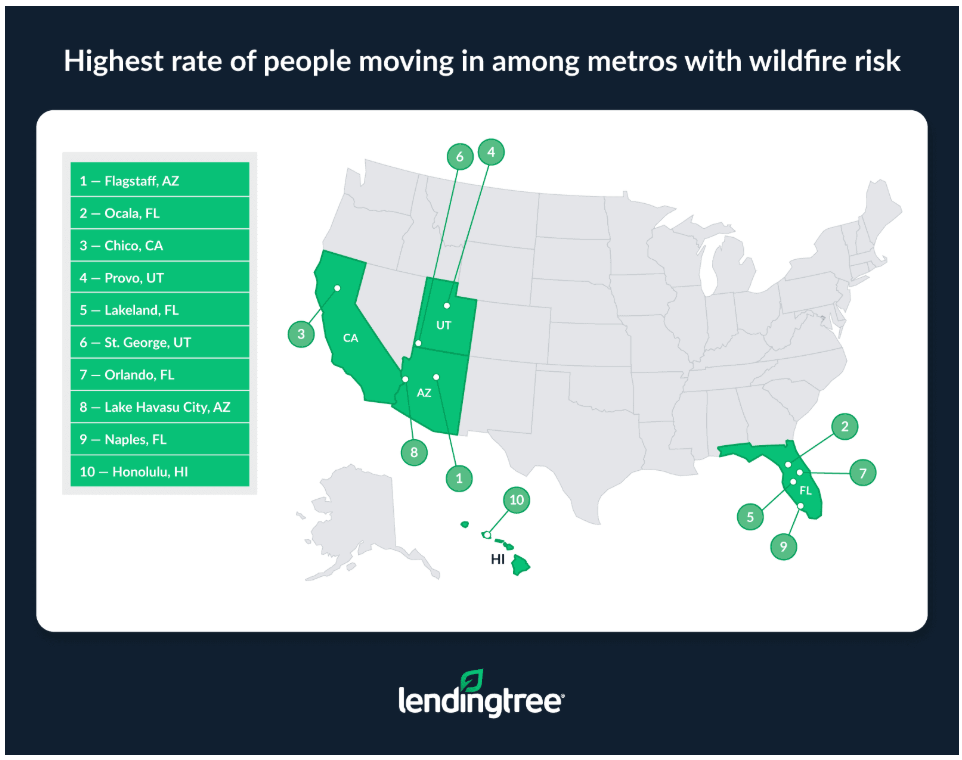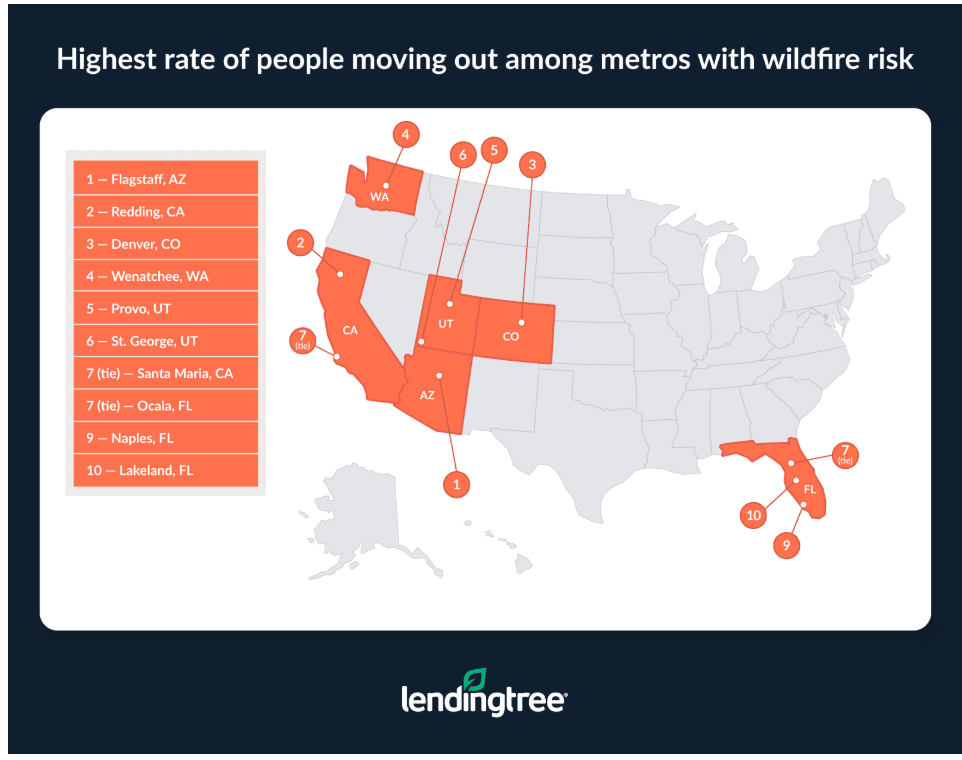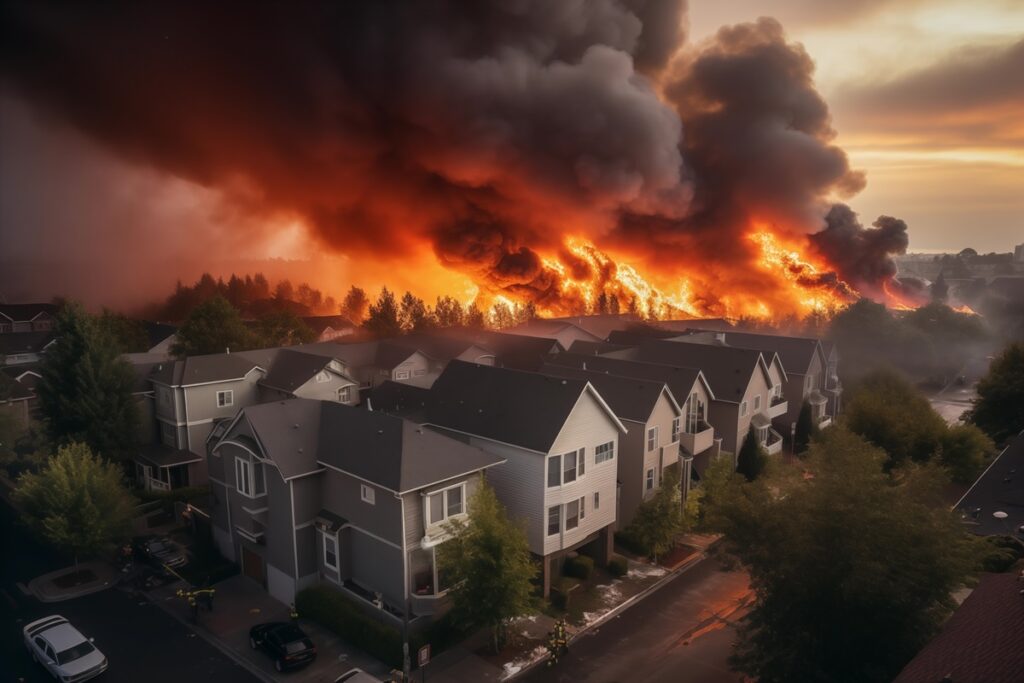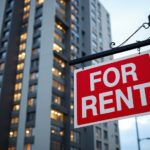All the recent wildfire activity reminded us of the old saying about firefighters being the only people running into a burning building while everyone else is running out. Apparently that applies to homebuyers as well: a new study by LendingTree shows that in the 29 metros with the highest wildfire risk, only two had a higher rate of people moving out than moving in. And then there’s Flagstaff, which has both (sort of).
Key Findings
- Among the metros with the highest wildfire risk, Flagstaff, Arizona had the highest rate of people moving in: The Arizona city added 137.1 people per 1,000 residents, with Ocala, Florida (96.8) and Chico, California (84.6), following.
- Flagstaff, Arizona also had the highest rate of people exiting: Suggesting a high population turnover, Flagstaff, Arizona lost 80.2 people per 1,000 residents. Redding, California (62.2), and Denver, Colorado (61.6) followed.
- Los Angeles and Fresno, California were the most stable metros, having the lowest rates of people moving in and out: Both California cities ended up with positive migration rates, meaning more people moved in than out: 7.9 per 1,000 residents for Los Angeles and 15.4 for Fresno.
- Only two of the 29 metros had more people moving out than in: Redding, California had the biggest negative migration rate (4.8 per 1,000 residents), and Wenatchee, Washington saw a negative migration rate of 0.9.
Flagstaff Experiences the Largest Influx
Flagstaff, Arizona had a high rate of people moving in at 137.1 people per 1,000 residents, it’s the only metro over 100.0. This might be due to increased tourism after efforts to enhance the community’s appeal. Attractions and restaurants have increased tourism revenue in the metro and, by default, improved the community.
After Flagstaff, Ocala, Florida (96.8) and Chico, California (84.6) had the next highest positive migration rates.

A metro is considered at considerable risk for wildfires if any county in it ranks in the top 50 for wildfire risk, according to Federal Emergency Management Agency (FEMA) National Risk Index (NRI) data. That meant there were 29 metros to be analyzed for this report.
Matt Schulz, LendingTree chief consumer finance analyst and author of Ask Questions, Save Money, Make More: How to Take Control of Your Financial Life, said high fire risk can lead to higher mortgage rates and lower home prices, especially if fires have recently hit nearby.
Flagstaff, Arizona Also Had Highest Exit Rate
Flagstaff, Arizona also reported the highest rate of people moving out—80.2 people per 1,000 residents—suggesting a high population turnover. The rub there is that the metro cannot support a significant increase in population: it’s surrounded by federal and tribal land, which both limits its outward growth and enhances its housing shortage. It doesn’t help that Flagstaff has become a popular spot for buying second homes, which is contributing to both the housing shortage and rising housing costs. After Flagstaff, the metros with the next highest rates of people moving out are Redding, California (62.2) and Denver, Colorado (61.6).

California Metros Maintain Stability
Unlike Flagstaff, the two California metros of Los Angeles and Fresno, when factored together, had the lowest rates of people moving in and out, suggesting a stable population. Both have positive migration rates, meaning more people move in than out. A net of 7.9 people per 1,000 residents moved into Los Angeles, while Fresno was at 15.4.
Meanwhile, Fresno also saw the highest population growth among the metros with the highest wildfire risk, jumping 16.2% between 2022 and 2023. Lakeland, Florida was in a distant second place with 3.9%.
Who Reported Negative Migration Rates?
Of the 29 metros studied, only two had more people moving out than in. Redding, California led, losing 4.8 residents per 1,000 people; Wenatchee, Washington followed with a negative migration rate of 0.9.
Schulz said that may present an opportunity for some, as long as you’re fine with the fire risk. “More people moving out than moving in likely means falling home prices,” he said. “It’s simple supply and demand. That’s good news for buyers but not for sellers.”
In the end, Schulz believes that it all comes down to the homebuyer’s risk tolerance.
“Some people only want the perfect house in the perfect neighborhood under the most perfect conditions,” he said. “Others are willing to make any sacrifice necessary to afford a new home. Most of us are somewhere in the middle. It’s important to understand how much risk you are willing to tolerate and what type of risks you are willing to put up with before signing on the dotted line.”
Click here for more on LendingTree’s report on wildfire risk.







